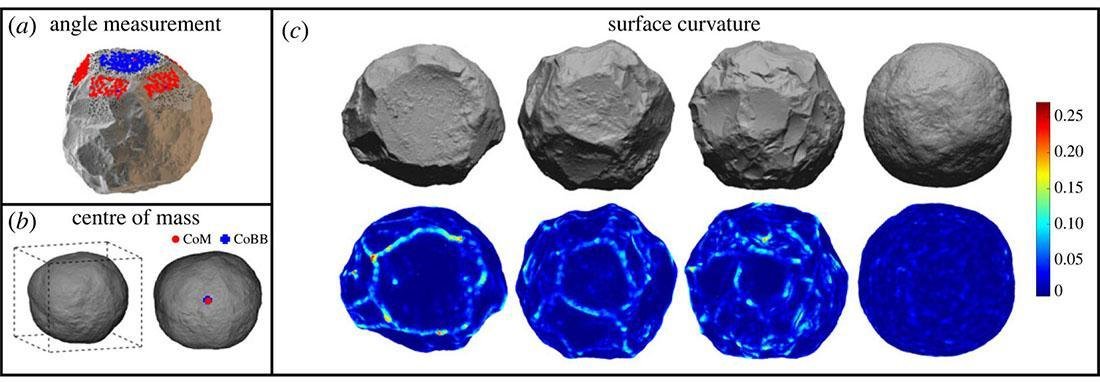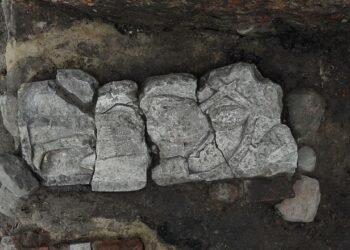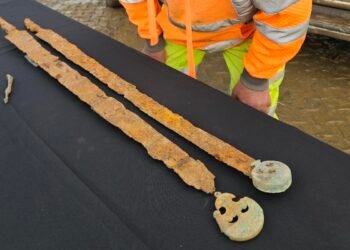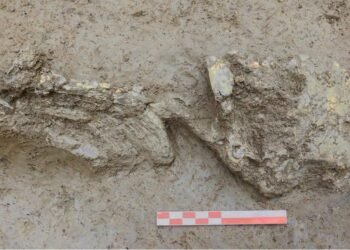A recent study conducted by experts from The Hebrew University of Jerusalem, in collaboration with researchers from Tel-Hai College and The Catalan Institute of Human Paleoecology and Social Evolution (IPHES), has unveiled the intentional crafting of spherical stone objects dating back 1.4 million years.

These enigmatic stone spheroids, discovered at the ‘Ubeidiya archaeological site in northern Israel, offer unprecedented insights into the ancient appreciation for geometry and symmetry.
Antoine Muller, a researcher at The Institute of Archaeology at The Hebrew University of Jerusalem, emphasized, “The main significance of the findings is that these spheroids from ‘Ubeidiya appear to be intentionally made, with the goal of achieving a sphere. This suggests an appreciation of geometry and symmetry by hominins 1.4 million years ago.”
The ‘Ubeidiya archaeological site, located in the Jordan Rift Valley, has been a source of intrigue since its discovery in 1959. Evidence of ancient occupation and thousands of stone tools suggest that it was utilized by some of the earliest members of Homo erectus as they migrated out of Africa.
Among the discoveries at this site, nearly 600 stone balls, known as spheroids, were found, primarily made of limestone, flint, and basalt. These spheroids have been found at various prehistoric human sites, some dating back as far as 1.8 million years.
To unravel the mystery surrounding these spherical artifacts, researchers employed cutting-edge technologies, including 3D analysis methods, to trace their creation process. The analysis revealed a deliberate crafting process, with patterns and markings indicating “a preconceived goal to make a sphere.” This transformation from irregular shapes to ideal spheres required exceptional knapping skills and clear intention, highlighting the ingenuity of early humans.
“Our findings suggest that the people who made these spheroids could envisage something as abstract as a sphere and impose that conception in reality by shaping a stone,” said Muller.

While the intentional crafting of these stone spheroids is now evident, their exact purpose remains a subject of speculation. Muller remarked, “We still can’t be confident about what they were used for. A lot of work needs to be done to narrow down their functionality.”
One theory suggests that these spherical objects could have served as projectiles, given their shape and weight, making them suitable for hunting. However, this remains a topic for further investigation.
The spheroids may also have had an unknown practical purpose that explained their shape. “One long-standing idea is that these were hammerstones used to knock flakes off a core,” Bruce Hardy, a paleoanthropologist at Kenyon College, Ohio, told Live Science.
These findings significantly challenge previous assumptions about early humans’ cognitive abilities and their use of technology. It suggests that hominins like Homo erectus, and possibly even earlier species like Homo habilis, possessed advanced cognitive skills, enabling them to envision and craft abstract geometric shapes.
The intentional crafting of these stone spheroids demonstrates a level of forethought, manual dexterity, and appreciation for geometry that was previously underestimated. This newfound perspective offers a deeper understanding of the cognitive evolution of early humans, showcasing their remarkable abilities and innovative thinking.
The findings were published in the journal Royal Society Open Science.
























